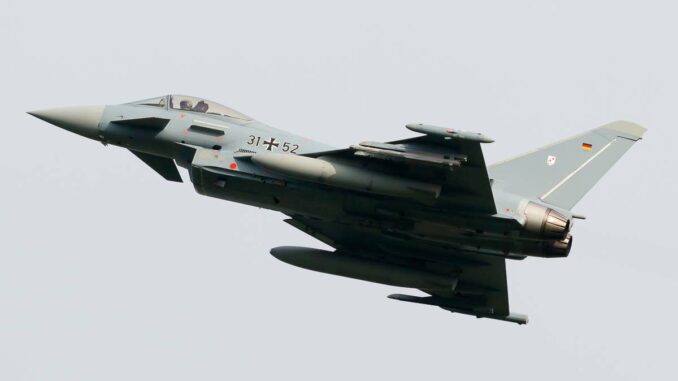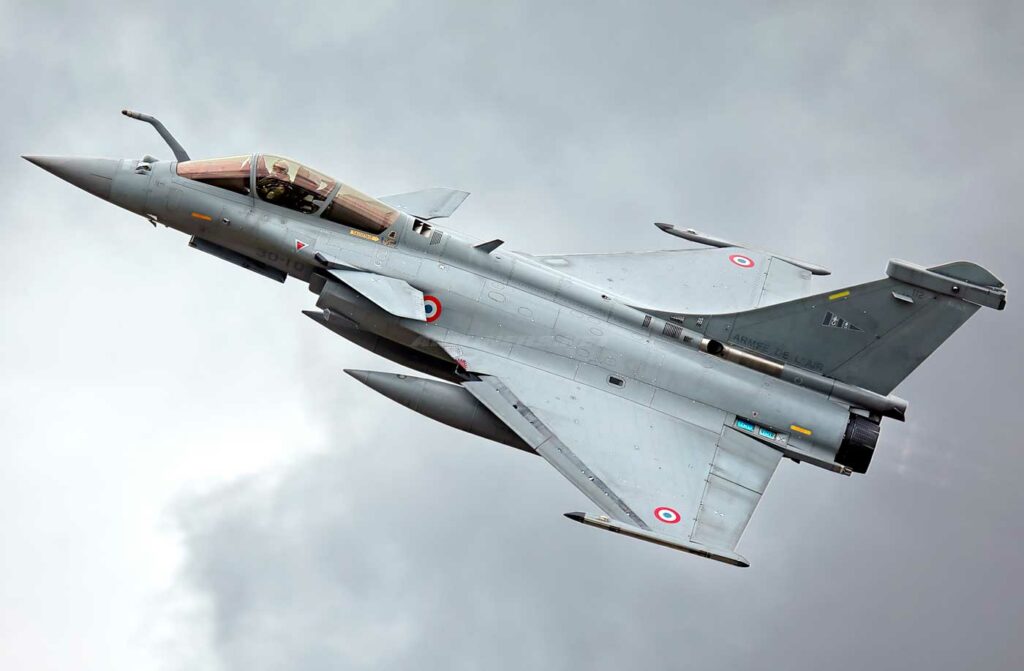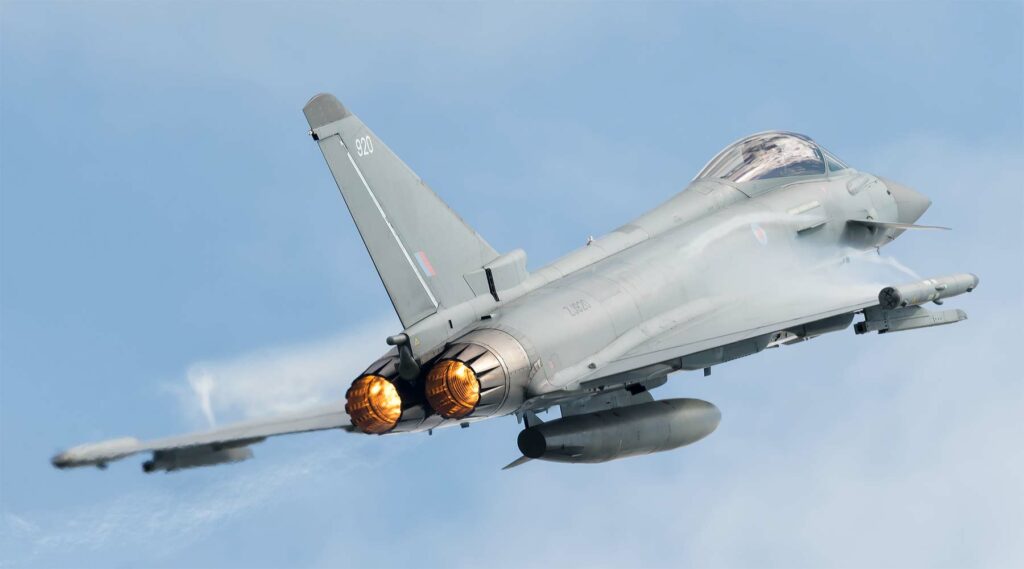
A detailed comparative analysis of the maintenance costs of the Rafale, F-35, and Eurofighter Typhoon, and their major impact on military budgets and sales.
The comparative cost of fighter jets weighs heavily on defense budgets. Comparing the maintenance costs of the Rafale, the maintenance costs of the F-35, and the maintenance costs of the Eurofighter Typhoon is not simply an accounting exercise. It is a strategic issue.
The hourly cost of the Rafale
The hourly cost of the Rafale is estimated at between $16,000 and $20,000 per flight hour. The French Air Force puts the figure at $20,000, including maintenance, fuel, salaries, and consumables. Some earlier sources cited approximately €14,600, while others put the figure at around €16,000 to €19,000. This maintenance cost for the Rafale appears reasonable, especially compared to its competitors, thanks to optimized maintenance and clear vertical contracts. Its reliability and ease of repair in service contribute to a controlled maintenance budget for the Rafale.

The hourly cost of the F-35
The hourly cost of the F-35 is significantly higher. For the F-35A version, it is estimated at $42,000 (≈ €39,500), according to the US Department of Defense. A significant portion of this cost comes from fuel—approximately €4,480 per hour—and the complexity of the system, which requires labor-intensive maintenance, proprietary parts, and specific tools. Even with optimized use, the overall cost of the F-35 remains higher than that of other Western fighter jets.
The hourly cost of the Eurofighter Typhoon
The hourly cost of the Eurofighter Typhoon is the highest of the three. It reaches approximately €60,000 per flight hour, due to its sophisticated avionics systems and complex maintenance. An earlier German analysis even mentioned $74,000 per hour, including shared operating and development costs. In Spain, the ratio was 9 hours of maintenance per flight hour, compared to 27.5 hours for the F/A-18A.
Summary comparison table
| Aircraft | Approximate hourly cost |
|---|---|
| Rafale | $16,000–20,000/hour |
| F-35A | ≈ $39,500/hour |
| Eurofighter Typhoon | ≈ $60,000/hour |
Impact on military budgets
- The Rafale’s maintenance budget is more modest. This allows for more regular and realistic operational use.
- The F-35’s maintenance budget is very high, imposing stricter usage restrictions. Fleets can fly less often.
- The Eurofighter Typhoon’s maintenance budget, which is the heaviest, may limit air availability. States must choose between modern equipment and deployment volume.
These costs reflect a dilemma: invest in an ultra-modern but expensive aircraft, or maintain higher flight rates by prioritizing availability and training frequency.
Impact on aircraft sales
In the export market, the maintenance costs of the F-35 may deter some buyers who are sensitive to the overall cost of the F-35, despite its stealth capabilities. The Typhoon suffers from a distributed industrial base that further increases its maintenance costs.
The Rafale, on the other hand, appears to be a more balanced solution for European or exporting countries wishing to limit their operating costs. Its maintenance of modern combat aircraft is considered more affordable, while offering robust multi-role capabilities.
Strategic thinking
This comparison reveals a paradox: a more advanced aircraft (the F-35) can cost up to twice as much to operate as a Rafale. Despite its performance, the Typhoon imposes a heavy economic burden.
Countries must weigh up technological superiority against the frequency of air sorties. For some, the maintenance of the Rafale compared to the F-35 or the Eurofighter Typhoon becomes a decisive factor, especially for those with budget constraints or requiring a continuously available fleet.
The weight of fuel in the hourly cost
Fuel consumption plays a central role in comparing the maintenance costs of fighter jets. It has a direct impact on the hourly cost and therefore the maintenance budget.
- Rafale: its Snecma M88 engine consumes around 3,500 liters per hour of flight at cruising speed. At an average price of $0.90/liter for military jet fuel, this represents approximately $3,150 per hour, or nearly 20% of the hourly cost of the Rafale.
- F-35A: equipped with the Pratt & Whitney F135 engine, the aircraft burns nearly 5,600 liters per hour of flight. This equates to a cost of $5,040 per hour in fuel alone, more than 12% of the total cost of the F-35. In afterburner mode, consumption rises to over 15,000 liters per hour, making supersonic flight extremely expensive.
- Eurofighter Typhoon: its two EJ200 engines consume a combined total of around 6,500 liters per hour of flight in normal mode, or nearly $6,500 per hour. This item accounts for a significant portion of the Eurofighter Typhoon’s maintenance costs. In combat configuration with afterburners, consumption can exceed 16,000 liters per hour, further increasing the cost differential with the Rafale.

Budget analysis and implications
Based on 200 flight hours per aircraft per year, the difference is considerable:
- A Rafale consumes around €630,000 of fuel per year,
- An F-35A exceeds €1,000,000,
- A Typhoon costs nearly €1,200,000.
These differences explain why the maintenance of the Rafale compared to the F-35 or the Typhoon is perceived as more sustainable. For a fleet of 40 aircraft, the difference in fuel budget can represent tens of millions of euros per year.
This variable weighs heavily in purchase negotiations. Some countries, such as Greece and India, attach particular importance to this parameter in order to anticipate the overall cost of the Rafale over several decades. Conversely, the partners in the F-35 program accept a high maintenance budget for the F-35, banking on its stealth capabilities and interoperability.
Very well, I will continue the article with a political and strategic analysis of the impact of the maintenance costs of the Rafale, the F-35 and the Eurofighter Typhoon on alliances, international procurement and defense diplomacy.
The impact of costs on alliances and political choices
The comparative cost of fighter jets goes beyond the technical dimension alone: it directly influences strategic balances.
- The F-35 as an alliance tool
The overall cost of the F-35 is considered high, but many European and Asian countries have chosen it because the aircraft embodies deep integration into the US defense sphere. Maintenance is centralized via the ALIS/ODIN system, managed from the US, which ensures rigorous monitoring but creates structural dependence. User countries accept a heavy F-35 maintenance budget in exchange for NATO interoperability and the guarantee of US political support. - The Rafale as a choice for autonomy
The lower maintenance cost of the Rafale appeals to countries wishing to preserve their strategic autonomy. India, Egypt, Greece, and the United Arab Emirates see the Rafale’s maintenance price as a balanced solution: modernity, sustainable costs, and no total dependence on Washington. The Rafale’s maintenance budget allows for more intensive use of fleets, a decisive argument for air forces that need to increase the number of sorties. - The Typhoon, victim of its high cost
The hourly cost of the Eurofighter Typhoon severely penalizes its export prospects. Designed as a multinational program, it suffers from fragmented industrial costs and logistics. This explains why its maintenance price is the highest of the three. Apart from the countries already involved in the program (the United Kingdom, Germany, Italy, and Spain), few countries are willing to invest in an aircraft whose maintenance budget far exceeds that of the Rafale.
Sales influenced more by economics than technology
Experience shows that comparisons of fighter jet maintenance costs carry more weight than technical performance alone. The F-35 dominates sales because it is backed by a political alliance, but its maintenance costs are a drain on budgets. The Rafale, with its combination of sustainable cost and multi-role capabilities, is enjoying export success. The Eurofighter Typhoon, despite its aerial qualities, sees its prospects reduced by its overall cost.
In a context where military budgets are increasingly scrutinized, this question becomes central: buying a fighter jet is not just about firepower, but commits a country to decades of logistical, industrial, and diplomatic spending.
War Wings Daily is an independant magazine.